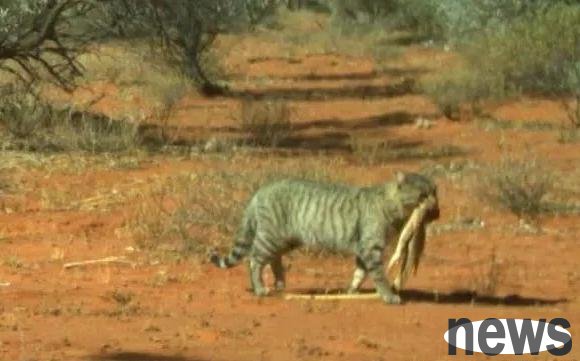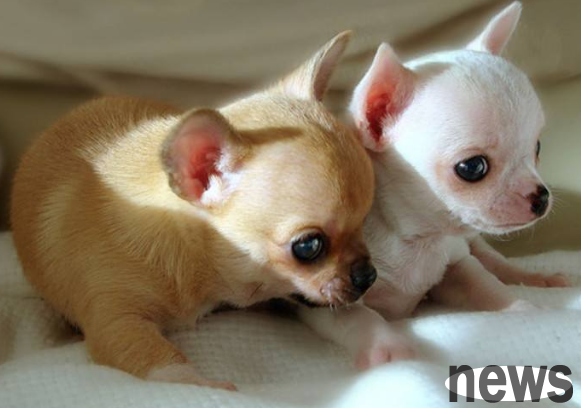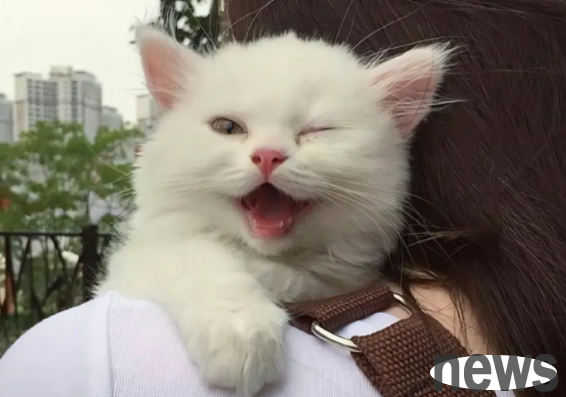An "unusual" wild cat was found in Australia that was as big as a small wild dog and was holding a 6 kilogram monitor lizard in its mouth!
There were no cats in Australia until they were brought there by European colonists in the 18th century. Cats, which were originally just pets, have become the most troublesome invasive alien species in Australia over time. About 3 billion animals become the prey of wild cats every year. A new study in Australia claims that wild cats are exhibiting unusual behaviors. They are as big as small wild dogs and dare to kill sand monitor lizards weighing several kilograms. They have also eaten or dragged away kangaroo carcasses weighing about 30 kilograms.

Emma Spencer, a researcher from the University of Sydney, installed multiple cameras in the Ethabuka Nature Reserve in the Simpson Desert in northwestern Queensland, Australia, to study the decomposition process of animal carcasses. As a result, while arranging the cameras, I discovered that I accidentally photographed a wild cat that was as big as a small wild dog, holding a freshly killed sand monitor lizard in its mouth.

Tips: The sand monitor lizard (scientific name: Varanus gouldii) is distributed throughout Australia, with a larger number in the arid areas of the west. It is a medium-sized carnivorous monitor lizard and is not good at climbing trees. Its adult body length is 1-1.2 meters, and its weight is generally more than 3 kilograms.
Feral cats kill billions of native Australian animals each year, and while they typically target small mammals, they may also hunt reptiles during the warmer months. What surprised Spencer the most was: "This sand monitor may weigh up to six kilograms, which is a very large prey for a cat. We rarely see wild cats catching such large prey. Moreover, sand monitors are very fast and difficult to kill."

In addition, when sorting out the cameras, we also found that large wild cats are becoming more and more common. Although ordinary domestic cats weigh between 3-5 kilograms, male wild cats in the wild can weigh more than 7 kilograms, comparable to small wild dogs.
While the images are somewhat shocking, Matthew Gentle, chief scientist from Biosecurity Queensland, said it was not unusual but a bit unusual. The team led by him discovered a similar phenomenon through research on wild cats. Wild cats drag killed wallabies backwards... to feed their offspring. In 2018, a wild cat was also photographed dragging away or eating a kangaroo carcass weighing about 30 kilograms.

Generally speaking, crows and wedge-tailed eagles are the main scavengers in the area, and even the dominant dingoes in the food chain rarely see scavenging behavior. But feral cats exhibit scavenging, which is a bit hard to imagine. Scientists speculate that this is not their normal behavior but an unusual response to a lack of alternative food. Long-term drought conditions in South Australia and New South Wales are eroding their main food supply (rodents, small birds and reptiles), so feral cats are forced to scavenge.
Numerous studies have shown that wild cats in Australia have caused irreversible damage to the Australian ecology. There are currently 5.6 million wild cats covering almost every corner of Australia. Feral cats have played a dominant role in 34 of Australia's extinct mammal species since 1788 and are a major contributor to the endangerment of at least 123 native species.
Australia has now controlled the number of wild cats through methods such as "shooting, releasing poisonous meat, trapping and euthanasia", but the results are quite limited. Because wild cats have no fixed time and location, if poisonous food is released, the wild cats may not poison a few animals, but some native animals that need to be protected will also be poisoned. Later, Australia built a 44-kilometer "anti-cat wall" to put some critically endangered wild animals inside. As for the effect, it remains to be tested by time.



